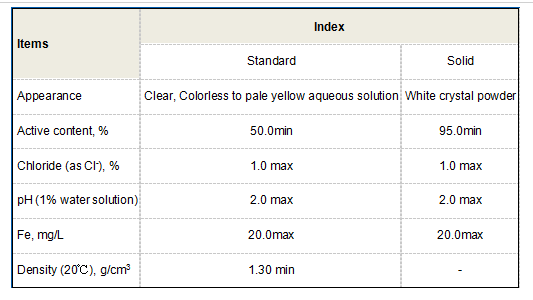pacl polyaluminum chloride
Polyaluminum Chloride (PAC) A Versatile Coagulant in Water Treatment
Polyaluminum chloride (PAC) is a widely used inorganic polymer coagulant, particularly in water treatment applications. PAC has gained popularity over traditional coagulants like alum due to its enhanced performance and added benefits. This article highlights the properties, advantages, and applications of PAC, focusing on its critical role in ensuring safe and clean water.
Chemical Composition and Structure
Polyaluminum chloride is a complex chemical compound formed by the hydrolysis of aluminum chloride in water. Its general formula can vary, leading to different molecular weights and structures. PAC consists of a mix of aluminum ions and hydroxyl ions, which form a network of polymer chains. This structure allows PAC to effectively neutralize the charges on suspended particles in water, facilitating their aggregation and subsequent removal.
Advantages of PAC Over Traditional Coagulants
One of the primary advantages of PAC is its superior coagulation performance even at lower dosages compared to traditional coagulants like aluminum sulfate (alum). This reduction in dosage not only lowers chemical costs but also minimizes the production of sludge, increasing the overall efficiency of the water treatment process. Additionally, PAC operates effectively across a wide range of pH levels, making it suitable for various water quality conditions.
pacl polyaluminum chloride

PAC’s lower odor and reduced aluminum residuals provide further benefits. The use of PAC results in lower concentrations of dissolved aluminum in treated water, which is particularly significant given the growing concerns regarding aluminum's potential health risks. Furthermore, PAC’s ability to enhance floc formation speed allows for faster sedimentation of particles, leading to improved clarification of treated water.
Applications in Water Treatment
Polyaluminum chloride is primarily utilized in municipal and industrial water treatment processes, where it serves as a coagulant for the removal of suspended solids, turbidity, and colloidal materials. Its effectiveness has made it a common choice for drinking water purification, wastewater treatment, and industrial processing.
In municipal water treatment plants, PAC is employed to ensure that drinking water meets safety standards by efficiently removing harmful contaminants. In wastewater treatment, PAC assists in the clarification and stabilization of effluent before discharge, helping to minimize environmental impacts.
Conclusion
The increasing use of polyaluminum chloride in water treatment reflects its numerous advantages over traditional coagulants. Its effectiveness, lower environmental impact, and cost efficiency make PAC an ideal choice for both municipal and industrial applications. As the global demand for safe and reliable water resources continues to rise, the importance of efficient coagulation techniques, like those provided by PAC, will undoubtedly grow. Continued research and innovations in PAC formulations will further enhance its performance, ensuring cleaner water for future generations.
-
lk-319-special-scale-and-corrosion-inhibitor-for-steel-plants-advanced-solutions-for-industrial-water-systemsNewsAug.22,2025
-
flocculant-water-treatment-essential-chemical-solutions-for-purification-processesNewsAug.22,2025
-
isothiazolinones-versatile-microbial-control-agents-for-industrial-and-consumer-applicationsNewsAug.22,2025
-
scale-inhibitor-key-solutions-for-water-system-scale-preventionNewsAug.22,2025
-
organophosphonates-versatile-scale-inhibitors-for-industrial-water-systemsNewsAug.22,2025
-
scale-and-corrosion-inhibitor-essential-chemical-solutions-for-water-system-maintenanceNewsAug.22,2025





